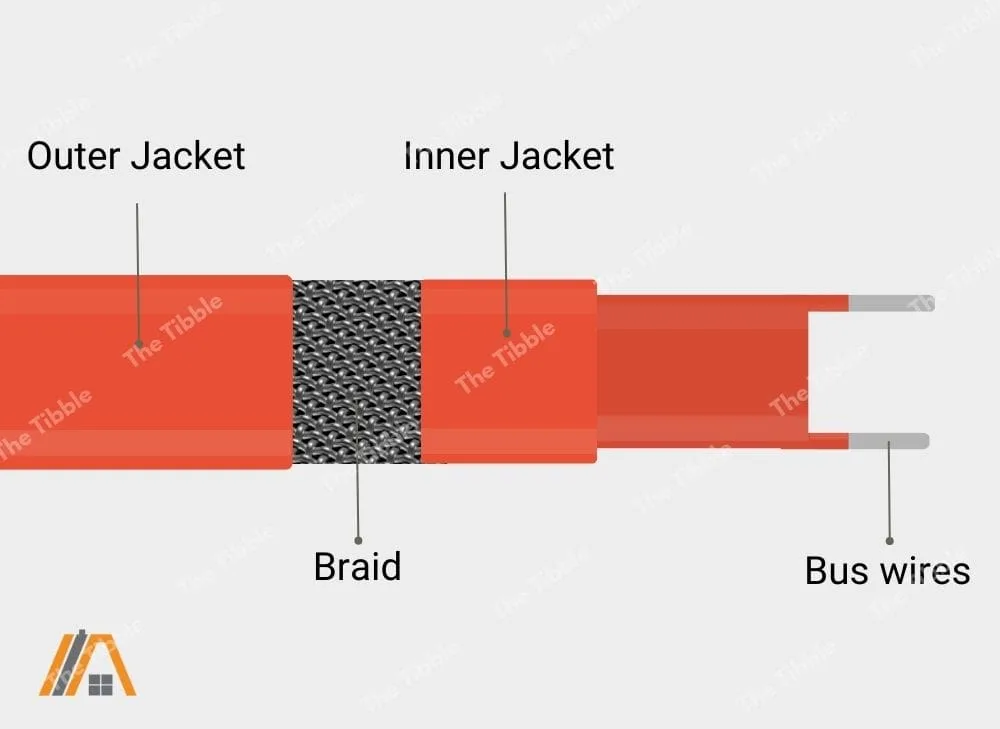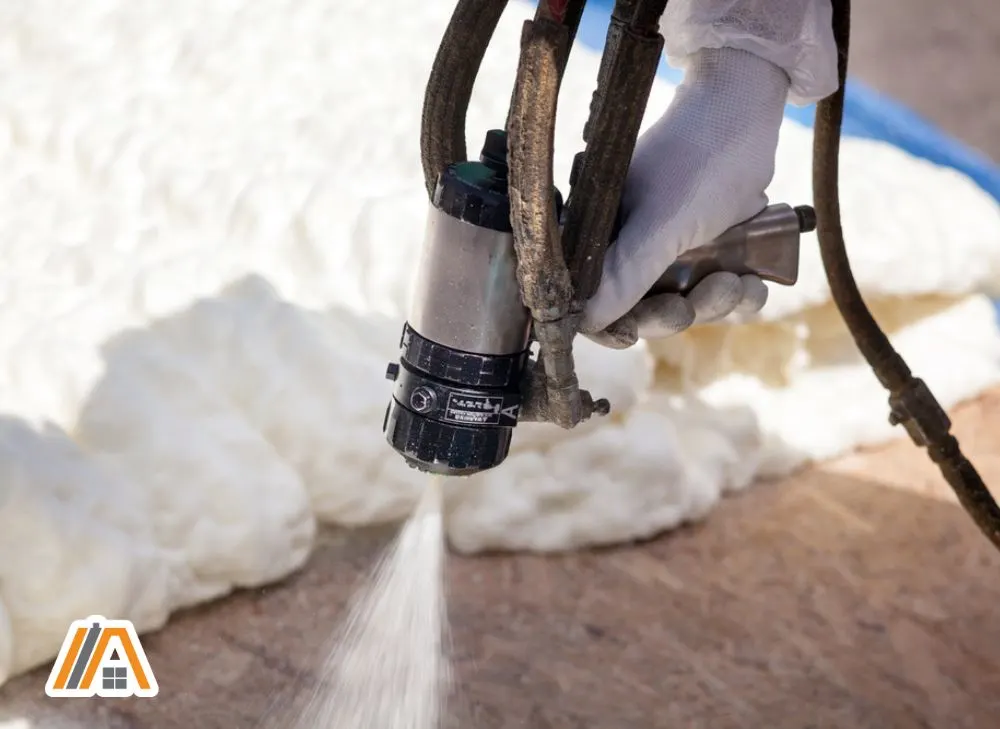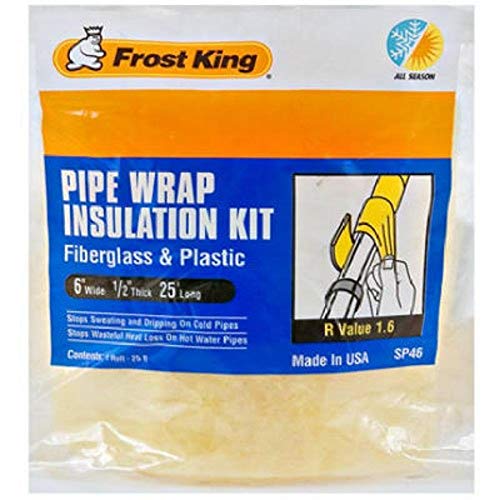Heat tape is a common solution for preventing frozen pipes and keeping water flowing during cold weather. However, when it comes to insulating around it, there is a question of safety.
While insulation can be a valuable tool for conserving energy and maintaining temperature, it must be to used correctly and safely. Homeowners can ensure their heat tape is installed correctly by understanding the limitations of insulation over heat tape, which depends, to a certain extent, on the type of heat tape.

Most manufacturers don’t recommend using insulation over heat tape as it can cause it to overheat, potentially leading to a fire hazard. It can also make it difficult to access the heat tape for maintenance or repair.
Self-Regulating Heat Tape
How It Works

But the real magic happens in the inner core of the heat tape. The core is made of a special material called a conductive polymer, which can conduct electricity but also has unique electrical properties that allow it to respond to changes in temperature.
When the temperature drops, the core contracts, and the cells between the bus wires come into contact with each other, completing an electrical circuit between the two wires. The core turns into a resistive heating element and generates heat as electricity flows through it, warming up the surrounding area.
On the other hand, when the temperature rises, the conductive core expands, and fewer cells between the wires are in contact with each other. This reduces the resistance through the wires, which generates less heat.
So, the heat tape is able to regulate the amount of heat it generates based on the surrounding temperature, which helps keep everything at a consistent and safe temperature.
If you are still confused, take a look at this Youtube video which explains it rather nicely.
Insulating Over the Tape
While not necessarily safe, it is less risky to use insulation over self-regulating heat tape compared to thermostat-controlled heat tape.
Some manufacturers, such as Frost King and Easy Heat, may even recommend using ½-inch fiberglass insulation over the heat tape in certain applications.
If the manufacturer does recommend using fiberglass insulation, it’s important to follow their instructions carefully and use the recommended thickness and type of insulation. A vapor barrier should also be installed to prevent moisture buildup within the insulation.
It’s important to note that not all manufacturers recommend using fiberglass insulation with their heat tape products.
In fact, many manufacturers explicitly state that insulation should not be laid directly over the heat tape, as this can potentially create a fire hazard or reduce the tape’s effectiveness.
Reasoning
As self-regulating heat tape has the ability to adjust the thermal output based on the environment, it means that if heat starts to build up as a result of the insulation, then the thermal output will decrease, preventing or limiting further heat buildup.
The reason to use insulation in addition to the heat tape is for the very reason that it does allow heat to build up.
When this happens, the thermal energy released from the heat tape is kept where it needs to be as opposed to dissipating to the environment. So, energy efficiency is improved. This is particularly important in colder climates.
For example, heat tape is often used in cold climates to prevent pipes from freezing. Insulation can help to provide additional thermal protection and prevent heat loss, which can be particularly important in preventing freezing.
The problem is that if the heat builds up too much as a result of too much insulation or a heat tape malfunction, then a fire hazard is created.
The manufacturer will likely only recommend insulation that is inherently fire-resistant, but there are still other components beneath and around the insulation that can be susceptible to flames.
There are also other concerns. Fiberglass insulation, for example, is not flammable, but it can burn or melt if the tape gets too hot.
Additionally, fiberglass insulation can release toxic fumes when burned, posing a health hazard to those nearby.
Insulation not approved or recommended by the manufacturer might not provide adequate thermal protection and may even reduce the tape’s effectiveness.
Watch what could happen if you use the incorrect insulation over heat tape or install it incorrectly.
Thermostat-Controlled Heat Tape
How It Works
Unlike self-regulating heating tape, which adjusts its heat output based on changes in temperature, thermostat-controlled heat tape, more commonly known as constant wattage tape, provides a consistent heat output regardless of the surrounding environment.
The tape is made of a heating element, which is usually a resistance wire encased in an insulating material. The tape is then covered with a protective jacket to prevent moisture, chemicals, or physical abrasion damage.
One of the advantages of constant wattage heat tape is that it provides a consistent amount of heat over the entire length of the cable, regardless of the temperature or the length of the cable. This makes it easier to determine the correct length and wattage of the tape needed for a particular application.
For those who desire to keep their homes heated evenly, this heating cable can be advantageous. The temperature can be regulated through a thermostat or control system, allowing greater control over the heating process.
Self-regulating heat tape is generally more commonly used than constant wattage tape. This is because self-regulating heat tape is more energy-efficient and can save money on electricity bills compared to constant wattage tape.
Constant wattage tape constantly draws the same amount of power regardless of the ambient temperature, making it less energy-efficient.
You must also remember to turn it on and off when the seasons change, as you don’t want the tape to be heated in summer and potentially start a fire.
Insulating Over the Tape
Insulating constant wattage tape is generally considered to be more dangerous.
Most manufacturers’ installation instructions recommend contacting them first before laying insulation. Because constant wattage tape doesn’t adjust its heat to the environment, the insulation you need will vary depending on your requirements.
Reasoning
Constant wattage tape can benefit from insulation because this tape tends to have a poor energy efficiency rating and/or its effectiveness can be compromised.
Constant wattage tape provides constant heat regardless of changes in the surrounding environment, such as the outside temperature or wind.
If conditions allow more heat will be lost to the environment, the tape may struggle to maintain the desired temperature. You will turn up the thermostat to account for this and energy can be lost, particularly if the conditions change and the thermostat does not need to be so high.
Insulation would mean that the heat produced is used effectively and efficiently.
In addition, insulation can come in handy when the conditions encourage heat to remain around the tape because you can enhance this by trapping the heat with insulation and turning the thermostat right down.
However, it is not recommended to use insulation with this type of heat tape. It is more dangerous because the output will not adjust in the face of heat buildup.
Yes, you can set the thermostat lower to try and account for the action of the insulation, but you could easily misjudge this setting, install too much insulation, or have faulty heat tape. Any of these scenarios can result in a fire.
Can You Put Spray Foam Insulation Over Heat Tape?
Spray foam insulation has a high R-value, which means it has excellent insulating properties and you only need a little to get a desirable outcome.
In addition, spray foam can conform to the shape of the surface to which it is applied and create a seal around it to prevent heat loss.
Spray foam is also resistant to moisture, which can protect whatever it is applied to.
All of these properties would make it ideal for use with heat tapes, but there are other properties that make it profoundly dangerous.
Spray foam insulation adheres to the surface to which it is applied. This means that in an emergency or for routine maintenance to prevent emergencies, you would need to work really hard to remove it and you may end up removing or at least damaging the heat tape in the process.

More important, however, is the fact that spray foam is flammable. It is not even supposed to be left exposed lest it comes into contact with a heat source. Now, if you go and actually spray it onto a heat source, you have problems.
It’s a great insulator, so heat will build up rapidly, and the spray foam can then ignite and carry the fire along the length of the heat tape.
Sources
https://www.frostking.com/products/heat-cables/automatic-electric-heat-cable-kits
https://www.washingtonpost.com/wp-srv/WPcap/2000-01/20/013r-012000-idx.html
https://www.warmup.com/blog/self-regulating-heat-tape
https://inspectapedia.com/plumbing/Pipe_Heat_Tapes.php#PipeInsulation
https://www.warmlyyours.com/en-US/posts/Self-Regulating-vs-Constant-Wattage-Heating-Cables-525#



